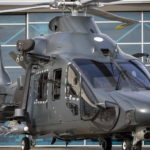Embraer has outlined what it sees as the air traffic control infrastructure required before urban air mobility can become a reality.
The airframer’s innovation division, EmbraerX, has published the FlightPlan 2030 whitepaper which proposes a “procedures-based vision for a new paradigm of air traffic management for the future urban air mobility industry”. It was developed In partnership with dozens of air traffic controllers, academics, pilots and industry experts.
The vision is based on technology from Atech, an Embraer company that develops air traffic control systems, and was published in partnership with Harris Corporation, which also provides air traffic management systems.
Open urban air traffic management
Antonio Campello, President & CEO of EmbraerX, said: “Urban air mobility will evolve to become a significant mode of transportation in the next decade and will require a truly collaborative ecosystem.
“Our Urban Air Traffic Management (UATM) concept ensures equitable and safe access to urban airspace for a broad spectrum of aircraft, including conventional helicopters, fixed-wing aircraft and eVTOLs (electric vertical take-off and landing).
“FlightPlan 2030 presents what we believe are the necessary first steps towards autonomous capabilities.”
The whitepaper examines the ways in which a dedicated air traffic control solution for the urban air mobility industry can interact and coordinate with conventional Air Traffic Control (ATC) agencies and Unmanned Traffic Management (UTM) for drones.
It proposes a new approach for managing high volumes of aircraft in a system that can safely and efficiently operate in dense, low-altitude urban airspace.
Foundations in place
“As a systems integrator and technology provider for multiple Brazilian defence agencies and other countries, we have been able to envision a dynamic ecosystem of technologies with a focus on maintaining the safety, security, and dependability on which we all rely,” said Edson Mallaco, CEO of Atech. “The foundations for this disruptive service are already available in many of the modern airspace systems currently being implemented around the world. However, all solutions must be tailored to local community needs, and our collaborative vision has been developed to ensure broad stakeholder input.”
Kelle Wendling, vice president and general manager, Harris Mission Networks, added: “As we look toward the introduction of urban air mobility, projects like the EmbraerX opportunity allow us to define and promote the safe and reliable integration of these vehicles into airspace systems around the world.”

